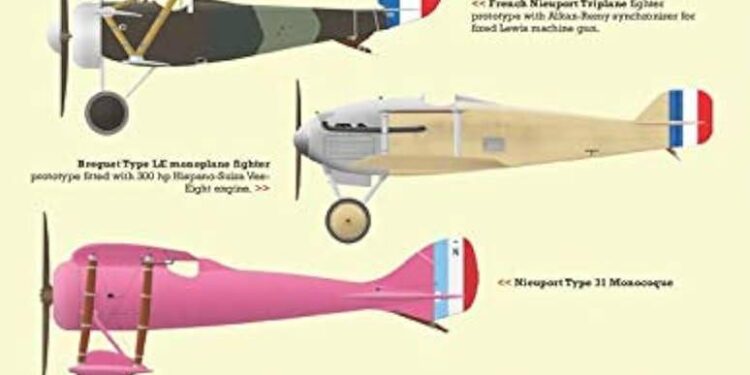Defending the Skies: The Strategic Alliance of French and Swedish Air Forces Against Russian Threats
In a world increasingly defined by geopolitical strife and territorial conflicts, the airspace above Europe has emerged as a crucial arena for military strength and deterrence. The recent deployment of French and Swedish fighter jets to the northernmost parts of the continent highlights a deepening commitment to protecting national sovereignty in response to perceived threats from Russia. As Moscow’s actions continue to stir unease among its neighboring countries, the collaboration between France and Sweden not only demonstrates military might but also embodies a comprehensive strategy aimed at preserving stability in an unpredictable global landscape. Each mission undertaken by these aircraft represents a key element of a united defense initiative, delivering an unequivocal message to Moscow while providing reassurance to allies across Europe. This article explores the strategic ramifications of these aerial operations and their importance in enhancing European security.
A Unified Defense: The Strategic Alliance Between French and Swedish Air Forces
The partnership formed between France’s and Sweden’s air forces marks a significant shift in European defense strategies amid rising tensions with Russia. This alliance has arisen out of necessity; aggressive maneuvers from Moscow have compelled both nations to bolster their aerial capabilities significantly. Joint training exercises have become essential for improving operational readiness, allowing pilots from both countries to respond effectively to potential threats while enhancing coordination between forces. This collaboration underscores shared goals, reinforcing commitments toward collective security amidst rapidly shifting geopolitical dynamics.
Key initiatives within this strategic partnership include:
- Coordinated Training Exercises: Engaging in simulated combat scenarios designed to improve tactical effectiveness.
- Resource Coordination: Streamlining logistics support for cross-border missions.
- Intelligence Sharing: Exchanging real-time data that enhances situational awareness during operations.
The impact is already evident through increased joint patrols over contested airspaces, showcasing solidarity against common threats. This collaborative approach not only serves as a deterrent but also sets an innovative precedent for allied defense strategies facing shared adversaries. Notably, the integration of advanced aircraft such as French Rafales alongside Swedish Gripens exemplifies technological synergy that could pave the way for deeper military cooperation moving forward.
Enhancing European Defense: Collaborative Operations Boost Tactical Readiness
The ongoing partnership between France and Sweden plays an instrumental role in strengthening European defense frameworks. By merging their aerial capabilities, both nations are not merely improving tactical readiness; they are also sending a strong signal against potential aggressors. Deploying advanced aviation units strategically illustrates how collaborative efforts can serve as effective barriers against external threats while ensuring regional stability remains intact. Central to this alliance is interoperability, where nations share intelligence resources and expertise collectively fortifying defenses against aggression.
- Synchronized Exercises: Regularly scheduled drills ensure seamless operational integration among allied forces.
- Tactical Intelligence Exchange: Establishing secure channels facilitates real-time data sharing that bolsters situational awareness during missions.
- Adequate Resource Distribution: Strategically allocating air assets ensures optimal coverage across various defensive needs.
The emphasis on tactical readiness cannot be overstated; European nations recognize that adaptability is vital amid hybrid warfare challenges today. Recent coordinated air patrols illustrate how joint efforts by French and Swedish warplanes are crucial for assessing evolving threats promptly—this proactive stance deters adversaries while affirming Europe’s commitment towards collective defense obligations.
The table below outlines recent milestones achieved through joint operations:
| Date | Description of Operation | Status/Outcome Achieved |
|---|---|---|
| October 2023 | Aerial Surveillance Mission | Successful Identification & Monitoring Of Potential Threats |
| September 2023 | Joint Training Exercise | Enhanced Combat Readiness Achieved |
Addressing Regional Tensions: Recommendations for Enhanced Military Coordination
The escalating tensions within the Baltic region highlight how strengthened military coordination can deter external aggressions effectively—as demonstrated by collaborations between French & Swedish air forces thus far! To further enhance engagement levels amongst militaries involved here’s what should be prioritized moving forward:
- Synchronized Drills : Regularly scheduled exercises will improve interoperability & efficiency among allied troops!
- Tactical Intelligence Exchange : Establish secure channels enabling timely information sharing leading up-to actionable insights when responding swiftly towards possible dangers!
- Cohesive Command Structures : Develop integrated command frameworks streamlining decision-making processes ensuring rapid responses during crises situations!
Moreover fostering partnerships beyond immediate allies strengthens defensive postures creating robust deterrents! Engaging NATO partners along with other regional powers expands collaborative landscapes introducing diverse capabilities/resources available! Key initiatives may include:
< th >< b ><b> ;Initiative</ b> ;</ th> ;<b> ;Description</ b> ;</ th> ; < td ><b> ;Multinational Task Forces</ b> ;</ td >>< / tr >< tr >< t d >& lt;b>ɿormation coalitions pooling resources/expertise conducting joint missions.& lt/b>' Implementing these recommendations will not only fortify France’s & Sweden’s military stances but contribute positively towards establishing stable security environments throughout regions underscoring unity efforts necessary deterring future risks ahead!
Conclusion: A Unified Front Against Uncertainty
As tensions rise across Eastern Europe today—the presence deployed fighter jets signifies pivotal shifts occurring within NATO’s overall defensive posture! These measures reflect collective commitments made amongst various EU member states counteracting aggressions maintaining peace/security amidst growing Russian expansionism threatening borders nearby! With heightened levels preparedness showcased via ongoing patrols/military readiness—alliances remain steadfast protecting interests safeguarding international norms established previously!
As geopolitical landscapes evolve continuously—the sustained presence exhibited through these warplanes serves dual purposes reminding us all about importance unity/preparedness required safeguarding tranquility amidst unpredictability surrounding us daily!































